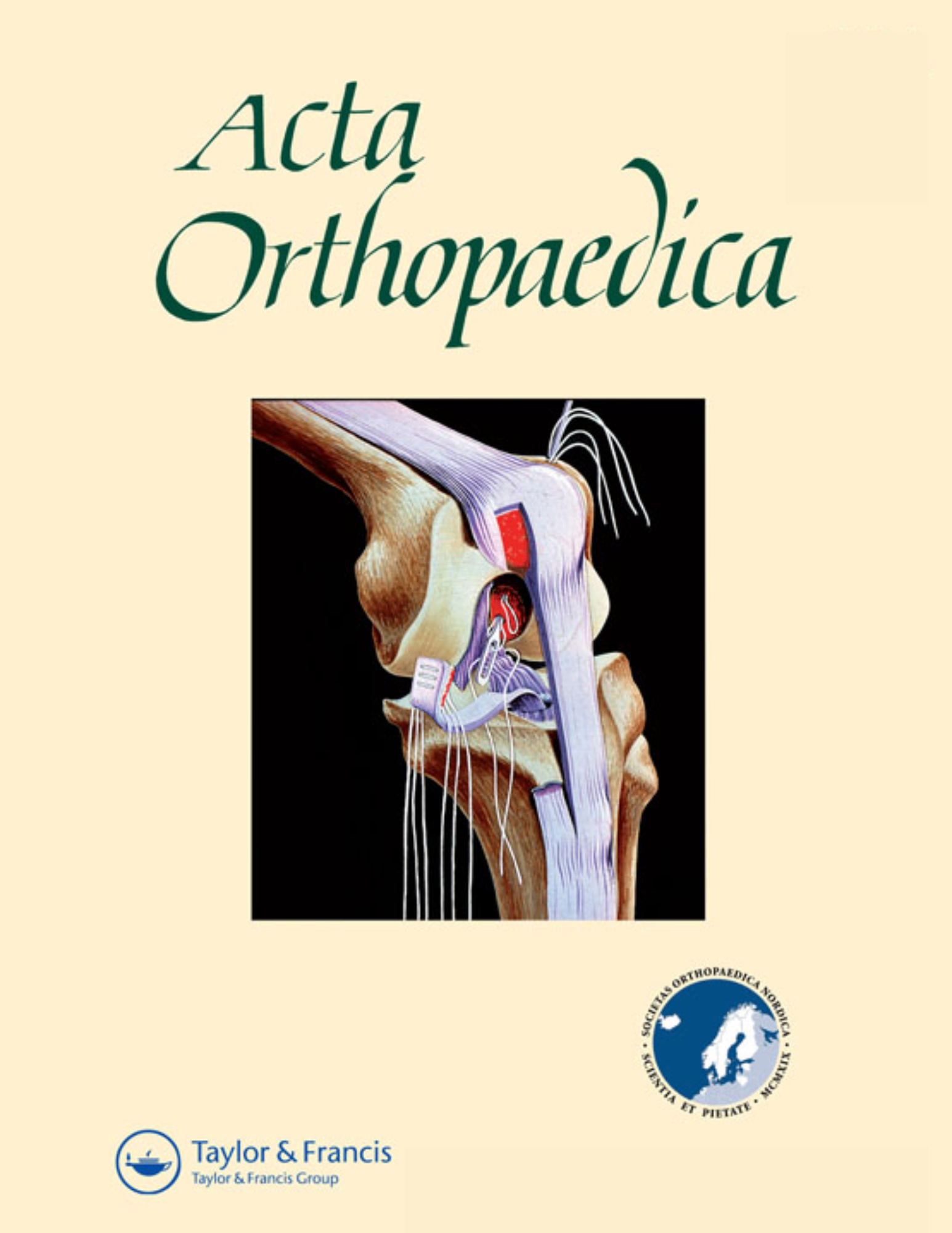
Metal-on-metal THA increases HLA DR+CD8+ T-cells & correlates with immunological reactions

Metal-on-metal THA increases HLA DR+CD8+ T-cells & correlates with immunological reactions
Elevation of circulating HLA DR(+) CD8(+) T-cells and correlation with chromium and cobalt concentrations 6 years after metal-on-metal hip arthroplasty
Acta Orthop. 2011 Feb;82(1):6-12. Epub 2010 Dec 29Synopsis
85 patients undergoing total hip arthroplasty (THA) were randomized to receive either a metal-on-metal bearing or a metal-on-polyethylene bearing. The primary outcome was elevation of circulating HLA DR+ CD8+ T-cells and correlation with chromium and cobalt concentrations. Results indicated that metal-on-metal THA increased chromium and cobalt concentrations which resulted in a correlation with immunological reactions. This was associated with the increase in HLA DR+CD8+ T-cells and a decrease in B-cells.
Was the allocation sequence adequately generated?
Was allocation adequately concealed?
Blinding Treatment Providers: Was knowledge of the allocated interventions adequately prevented?
Blinding Outcome Assessors: Was knowledge of the allocated interventions adequately prevented?
Blinding Patients: Was knowledge of the allocated interventions adequately prevented?
Was loss to follow-up (missing outcome data) infrequent?
Are reports of the study free of suggestion of selective outcome reporting?
Were outcomes objective, patient-important and assessed in a manner to limit bias (ie. duplicate assessors, Independent assessors)?
Was the sample size sufficiently large to assure a balance of prognosis and sufficiently large number of outcome events?
Was investigator expertise/experience with both treatment and control techniques likely the same (ie.were criteria for surgeon participation/expertise provided)?
Yes = 1
Uncertain = 0.5
Not Relevant = 0
No = 0
The Reporting Criteria Assessment evaluates the transparency with which authors report the methodological and trial characteristics of the trial within the publication. The assessment is divided into five categories which are presented below.
1/4
Randomization
3/4
Outcome Measurements
4/4
Inclusion / Exclusion
4/4
Therapy Description
4/4
Statistics
Detsky AS, Naylor CD, O'Rourke K, McGeer AJ, L'Abbé KA. J Clin Epidemiol. 1992;45:255-65
The Fragility Index is a tool that aids in the interpretation of significant findings, providing a measure of strength for a result. The Fragility Index represents the number of consecutive events that need to be added to a dichotomous outcome to make the finding no longer significant. A small number represents a weaker finding and a large number represents a stronger finding.
Why was this study needed now?
Elevated metal ion concentrations from metal-on-metal arthroplasties have been associated with immunological reactions. It is hypothesized that an increased concentration of metal ions causes changes in the lymphocyte sub-populations. This study examines the change in concentration of HLA DR+ CD8+ T-cells and the correlation with chromium and cobalt concentrations in patients undergoing metal-on-metal or metal-on-polyethylene total hip arthroplasty (THA).
What was the principal research question?
What are the outcomes in HLA DR+ CD8+ T-cell elevation and its correlation with chromium and cobalt concentrations in patients, 6 years after undergoing metal-on-metal total hip arthroplasty (THA) compared to metal-on-polyethylene THA?
What were the important findings?
- Serum concentrations of chromium and cobalt were higher in patients who received the metal-on-metal total hip arthroplasty (THA) compared to patients who underwent metal-on-polyethylene THA when examined at follow-up. (Chromium: 1.05 vs. 0.36 ug/L; p<0.001; Cobalt: 0.86 vs. 0.24 ug/L; p<0.001)
- The metal-on-metal group had a higher percentage of HLA DR+ CD8+ T-cells. (10.6 vs. 6.7%; p=0.03) This had a positive correlation with cobalt and chromium concentrations in patient blood (Pearson's correlation coefficient for cobalt: 0.36, p=0.03; Chromium: 0.39, p=0.02).
- The metal-on-metal group had a lower percentage of B-cells.(9.3% compared to 12.9% in the metal-on-polyethylene group) (p=0.01)
- Comparable immunoglobulin concentrations and Harris hip scores were seen between the two groups. No radiographic signs of loosening, wear or periprosthetic osteolysis were seen with either group at follow-up.
- Both groups of patients had similar concentrations of immunoglobulins IgG (and subgroups 1-4), IgM, and IgA.
What should I remember most?
Metal-on-metal THA increases cobalt and chromium concentrations at 6-years and produces immunological alterations. There is also a positive correlation with HLA DR+ CD8+ T-cells and chromium and cobalt concentrations. Finally, the metal-on-metal group had a reduction in the percentage of B-cells.
How will this affect the care of my patients?
There is still a lack of evidence that the increase in HLA DR+ CD8+ T-cells, associated with metal-on-metal THA, causes allergic reactions, aseptic loosening, or periprosthetic pseudotumors. Further studies with a larger population are required to examine these potential associations.
Learn about our AI Driven
High Impact Search Feature
Our AI driven High Impact metric calculates the impact an article will have by considering both the publishing journal and the content of the article itself. Built using the latest advances in natural language processing, OE High Impact predicts an article’s future number of citations better than impact factor alone.
Continue



 LOGIN
LOGIN

Join the Conversation
Please Login or Join to leave comments.